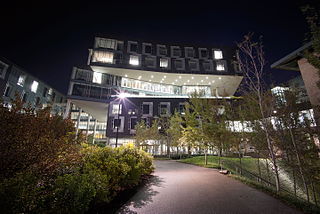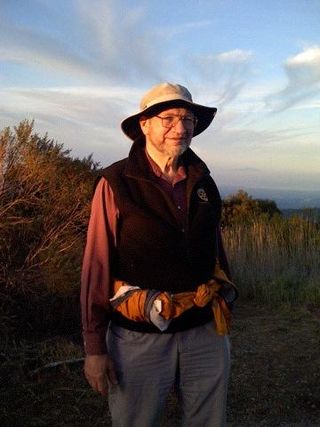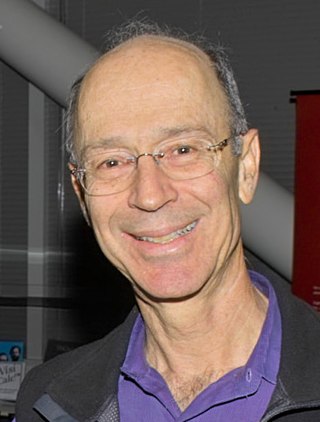A* is a graph traversal and pathfinding algorithm, which is used in many fields of computer science due to its completeness, optimality, and optimal efficiency. Given a weighted graph, a source node and a goal node, the algorithm finds the shortest path from source to goal.

The School of Computer Science (SCS) at Carnegie Mellon University in Pittsburgh, Pennsylvania, US is a school for computer science established in 1988. It has been consistently ranked among the top computer science programs over the decades. As of 2022 U.S. News & World Report ranks the graduate program as tied for second with Stanford University and University of California, Berkeley. It is ranked second in the United States on Computer Science Open Rankings, which combines scores from multiple independent rankings.

Dabbala Rajagopal "Raj" Reddy is an Indian-American computer scientist and a winner of the Turing Award. He is one of the early pioneers of artificial intelligence and has served on the faculty of Stanford and Carnegie Mellon for over 50 years. He was the founding director of the Robotics Institute at Carnegie Mellon University. He was instrumental in helping to create Rajiv Gandhi University of Knowledge Technologies in India, to cater to the educational needs of the low-income, gifted, rural youth. He was the founding chairman of International Institute of Information Technology, Hyderabad. He is the first person of Asian origin to receive the Turing Award, in 1994, known as the Nobel Prize of Computer Science, for his work in the field of artificial intelligence.
In the history of artificial intelligence, neat and scruffy are two contrasting approaches to artificial intelligence (AI) research. The distinction was made in the 1970s and was a subject of discussion until the mid-1980s.

SRI International (SRI) is an American nonprofit scientific research institute and organization headquartered in Menlo Park, California. The trustees of Stanford University established SRI in 1946 as a center of innovation to support economic development in the region.
Richard Earl Fikes is a computer scientist and Professor (Research) Emeritus in the Computer Science department of Stanford University. He is professionally active as a consultant and expert witness. He led Stanford's Knowledge Systems Laboratory from 1991 to 2006, and has held appointments at Berkeley, Carnegie-Mellon, Price Waterhouse Technology Centre, Xerox PARC, and SRI International.

Bertram Raphael is an American computer scientist known for his contributions to artificial intelligence.

Nils John Nilsson was an American computer scientist. He was one of the founding researchers in the discipline of artificial intelligence. He was the first Kumagai Professor of Engineering in computer science at Stanford University from 1991 until his retirement. He is particularly known for his contributions to search, planning, knowledge representation, and robotics.

Randal E. Bryant is an American computer scientist and academic noted for his research on formally verifying digital hardware and software. Bryant has been a faculty member at Carnegie Mellon University since 1984. He served as the Dean of the School of Computer Science (SCS) at Carnegie Mellon from 2004 to 2014. Dr. Bryant retired and became a Founders University Professor Emeritus on June 30, 2020.

Peter E. Hart is an American computer scientist and entrepreneur. He was chairman and president of Ricoh Innovations, which he founded in 1997. He made significant contributions in the field of computer science in a series of widely cited publications from the years 1967 to 1975 while associated with the Artificial Intelligence Center of SRI International, a laboratory where he also served as director.
Richard Jay Waldinger is a computer science researcher at SRI International's Artificial Intelligence Center whose interests focus on the application of automated deductive reasoning to problems in software engineering and artificial intelligence.

Manuela Maria Veloso is the Head of J.P. Morgan AI Research & Herbert A. Simon University Professor Emeritus in the School of Computer Science at Carnegie Mellon University, where she was previously Head of the Machine Learning Department. She served as president of Association for the Advancement of Artificial Intelligence (AAAI) until 2014, and the co-founder and a Past President of the RoboCup Federation. She is a fellow of AAAI, Institute of Electrical and Electronics Engineers (IEEE), American Association for the Advancement of Science (AAAS), and Association for Computing Machinery (ACM). She is an international expert in artificial intelligence and robotics.
Matthew Thomas Mason is an American roboticist and the former Director of the Robotics Institute at Carnegie Mellon University. Mason is a researcher in the area of robotic manipulation, and is the author of two highly cited textbooks in the field.

Any-angle path planning algorithms are pathfinding algorithms that search for a Euclidean shortest path between two points on a grid map while allowing the turns in the path to have any angle. The result is a path that cuts directly through open areas and has relatively few turns. More traditional pathfinding algorithms such as A* either lack in performance or produce jagged, indirect paths.

Sven Koenig is a full professor in computer science at the University of Southern California. He received an M.S. degree in computer science from the University of California at Berkeley in 1991 and a Ph.D. in computer science from Carnegie Mellon University in 1997, advised by Reid Simmons.

Eric Poe Xing is an American computer scientist whose research spans machine learning, computational biology, and statistical methodology. Xing is founding President of the world’s first artificial intelligence university, Mohamed bin Zayed University of Artificial Intelligence (MBZUAI).
G. Ayorkor Korsah is a Senior Lecturer in Computer Science and Robotics at Ashesi University in Ghana.

Helen Chan Wolf is an artificial intelligence pioneer who worked on facial recognition technology and Shakey the robot, the world's first autonomous robot, at SRI International.















